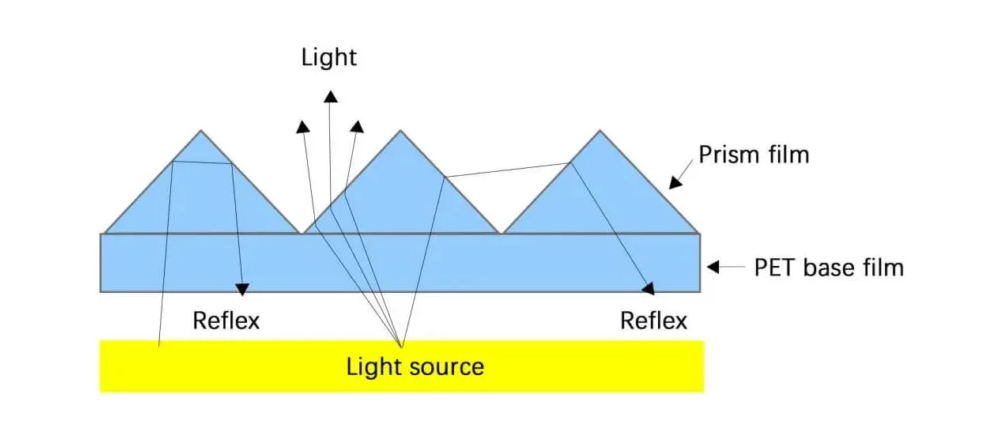Brightness Enhancement Film (BEF), also known as prism film, plays a critical role in improving the performance of LCD (Liquid Crystal Display) backlight systems. It is a vital optical component used in modern display technologies, such as monitors, tablets, smartphones, and televisions. This article explains the basic function, working principle, and integration of BEF with other optical films like diffusers and polarizers.
1. What Is the Function of Brightness Enhancement Film (BEF)?
The main function of a Brightness Enhancement Film is to increase the brightness and optical efficiency of the display without increasing power consumption.

Illustration 1: Position of BEF in the LCD backlight module
Improving screen brightness by 30–60%
Enhancing energy efficiency
Supporting thin, lightweight designs
2. How Does BEF Work? The Optical Principle Behind It
BEF uses microstructured prism patterns to manipulate light direction. These triangular prisms are aligned across a PET film to redirect light forward.

Light Collimation: Converting wide-angle scattered light into a narrow beam
Total Internal Reflection (TIR): Recycling misdirected light
Dual-Layer BEF: Crossed prism orientations (90°) to boost uniform brightness
3. Optical Integration: Working with Diffuser Films and Polarizer film
BEF is part of a layered optical stack in LCDs.
Optical film stack in a typical LCD
Includes Reflector → Light Guide Plate → Diffuser → BEF → Polarizer → LCD Panel.
● Diffuser Films
Ensure uniform light distribution and eliminate hotspots.
● Polarizer film
Control the polarization of light, improving image quality and contrast.
● Reflector Films
Reflect unused light back into the light guide for recycling.
4. Applications of BEF in Modern Displays
BEF is widely used in:
1).LCD TVs and Monitors
2).Tablets and Laptops
3).Automotive Displays
4.)Medical and Industrial Equipment
5).Smartphones and Wearables
Conclusion
Prism-based Brightness Enhancement Films are essential for today’s energy-efficient, high-brightness displays. Their ability to control and enhance light output, especially when working in coordination with diffusers and polarizers, makes them indispensable in modern LCD architecture.


